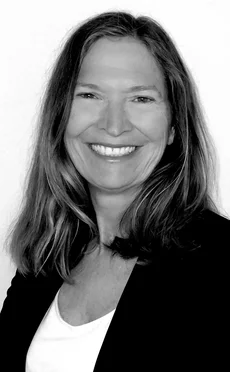
Sharpening the tools – Preparation for UMR phase five

A forum of industry leaders discusses the suitability of the standard initial margin model (Simm) for phase five firms, how they can optimise portfolios to minimise margin costs and how the lessons learned from previous phases can help them prepare
The panel
- Varqa Abyaneh, Chief Product Officer, Quantile
- Neil Murphy, Business Manager, TriOptima
- Tom Archer, Product Development Manager, RepoClear and EquityClear, LCH
- Kah Yang Chong, Head of ForexClear Product for Europe, the Middle East and Africa, LCH
- Sandy McRae, Managing Director, Financing, Collateral and Trading, CPP Investments
- John O’Donovan, Murex Business Analyst, Nationwide Building Society
Despite the delay to phase five uncleared margin rules (UMR) implementation, many firms have made little preparatory progress. What implementation priorities should they focus on as the deadline approaches?

Varqa Abyaneh, Quantile: Firms set to go-live in phase five can look to the lessons learned from previous phases when determining their implementation priorities. These priorities broadly fall into three areas: preparation, calculation and optimisation.
First, firms should ensure they have the correct legal documents in place with their counterparties and custodians so margin amounts can be agreed and transferred. Second, they should decide whether to calculate their trade-level risk sensitivities – inputs to the Simm calculation – internally or via a third-party vendor. Implementing a daily reconciliation service, such as Acadia’s IM Exposure Manager, can be helpful to streamline and simplify the agreement and transfer of initial margin (IM) amounts once live.
Third, firms need to determine if their portfolio requires proactive risk management to optimise their total uncleared margin requirements. By adopting multilateral portfolio optimisation – such as Quantile’s IM optimisation service – firms can reduce their counterparty risk and associated margin funding costs. Firms should perform the relevant onboarding work to ensure they are ready to optimise their portfolios when they go live.
Tom Archer and Kah Yang Chong, LCH: Firms in-scope for phase five should ensure that appropriate documentation – such as credit support annexes (CSAs) – and custodial arrangements are in place with dealer counterparties. Firms should prioritise counterparty relationships likely to meet the $50 million IM threshold. With more than 300 entities coming into scope, they need to be aware that this process creates an operational burden for their dealer counterparties and could take many months to resolve.
To reduce the impact of UMR, these firms should also consider portfolios that can be transferred to clearing. Although it is perhaps a little too late to use this strategy to reduce the average aggregate notional amount (AANA) to below $50 billion before the end of the calculation window, a firm in scope for phase five UMR can reduce the number of impacted counterparty relationships by transferring risk between cleared and uncleared portfolios, either in totality or such that the IM exchange falls below the $50 million threshold.
Sandy McRae, CPP Investments: While it may not be necessary to have 100% readiness on September 1, 2021, firms should ensure they have a plan B on how to continue trading derivatives that are critical until their UMR implementation is complete.
For smaller derivatives books, this can be accomplished by executing trades that don’t require the posting of IM – in effect, monitor and stay below thresholds or execute cleared trades/exchange-traded derivatives instead of over the counter (OTC). This can buy firms some time to continue with broader implementation plans.
For more complex trading books that include non-clearable trades, it will be critical to onboard at least one trading counterparty – and add more over time – and secondly, to be able to transfer collateral to a third-party custodian. If you are using a tri-party custodian, I would recommend prioritising onboarding counterparties that are using the same custodian as the process is simpler – for example, eligible collateral schedules will use the same format.
Although prudent for firms to be able to calculate/validate the IM amounts, it may not be required by all firms – depending on jurisdiction and applicable regulation. Some firms may be able to negotiate to have their dealer act as sole calculation agent, thereby relieving their IM calculation requirements. Relying on counterparty calculations can buy firms some time to complete the work required to calculate their own IM amounts.
John O’Donovan, Nationwide Building Society: I think it is helpful to split phase five firms into two separate cohorts – those ‘participating’ firms that will breach an agreed threshold soon after go-live, and ‘monitoring’ firms that will proably breach a threshold with one or two counterparties – but not for quite some time. Phase five firms are those between the AANA range of €50 billion–750 billion, which captures a wide range of firms from large to small.
From the large number of firms that need to be compliant for phase five, I expect only 100–200 will be in the participating cohort. The priority for these firms is likely to be the papering of required legal documentation for a few high-volume counterparties. The legal document negotiation progress is extremely slow and this has to be the priority ahead of go-live, so that the front office is not prevented from taking derivative positions. These firms should also be able to compute IM exposure for all of their CSA counterparties to monitor exposure day to day, so they are operationally ready to meet IM margin calls as the IM exposure approaches the informally agreed threshold.
For the monitoring firms, the need to sign up a custodian or paper any legal documents may not be the highest priority. Instead, these firms should still be monitoring exposure with as many of their CSA counterparties as possible, so they have time to get operationally ready. IM exposure can be monitored internally or by monitoring the exposures in Acadia that their counterparties have uploaded.
Neil Murphy, TriOptima: I’m not sure I agree with the generalisation that ‘many firms have made little progress’. I think it’s more nuanced. It’s true that perhaps the one-year delay wasn’t used as well as it might have been. But the primary purpose of the delay was to allow firms to manage the risks associated with the increase in volatility, rather than simply provide more time for UMR preparations.
Similarly, we should recognise that regulatory relief also exempts a large proportion of phase five firms from several key UMR steps, including legal documentation and opening of custody accounts while they remain below a threshold of $50 million. While it may appear that many firms are not as advanced in their preparations as their peers at a similar stage in earlier phases, the truth is that many phase five firms have a lighter compliance burden.
The key process all firms must prioritise is IM calculation. Regardless of the size of a firm’s IM exposure with each counterparty, this will be required for all portfolios on day one. Early IM calculation is also essential as, without it, firms cannot clearly distinguish between portfolios where they must complete all steps and those where relief can be applied. Associated with this, firms that can run multiple simulations up front might also be able to estimate when they will breach regulatory thresholds for the exchange of collateral, and thus better time some of the associated preparation steps.
Both of these steps are important since they help firms identify priority counterparties to negotiate with, and subsequently agree on the custodians each will use. For firms that do not expect to exceed $50 million thresholds for some time, it can also help them define a longer timeline for full compliance.
The associated key requirement is obviously the choice of how to calculate IM. And, with the number of available Simm calculation providers having greatly increased since 2016, it is becoming even more difficult for phase five firms to justify building their own calculators as dealers did in the first phases.
To what extent will phase five firms rely on margin monitoring services to forestall their preparations? What governance processes are required in following this strategy?

Tom Archer and Kah Yang Chong: Firms in-scope need to carefully monitor their bilateral IM for each counterparty and only set up UMR arrangements with counterparties close to or above the IM threshold. On the face of it, this approach is proportionate; however, the logistics can be complex. It requires daily, active, real-time threshold management across all asset classes and making decisions at the right time to set up UMR arrangements.
As regulations do not extend a grace period to firms that breach the IM threshold, market movements and material risk position changes can quickly increase bilateral IM, while setting up UMR arrangements could take months. This could lead to loss of liquidity access and, ultimately, impact best execution.
Monitoring IM thresholds is also challenging for separately managed accounts, where multiple fund managers are executing on behalf of a single fund. The IM threshold may need to be shared or divided, which could negate any benefits by monitoring margin.
In contrast, alternative approaches, such as voluntary clearing and product substitution, deliver the benefits of counterparty choice, capital savings and operational efficiencies.
Neil Murphy: Regulatory relief that permits phase five and six firms to delay – or even exempt them – from some of the key preparations is welcomed by in-scope firms. While it allows them to potentially delay some of the more time-consuming tasks, firms that want to take this path are still required to perform daily IM calculations and monitoring of exposure.
IM monitoring isn’t a ‘get out of jail free‘ card – firms still need to undertake the same IM calculation steps as those that are required to comply. This means selection of the appropriate IM model for each portfolio, identification of the correct in-scope trades and relevant jurisdictions, as well as implementing an IM calculation engine.
Regulators in some jurisdictions require firms to request approval for use of an internal model to calculate IM, which may be required regardless of whether they are monitoring or exchanging collateral. Fortunately, for firms looking to defer some of the steps, no additional approvals are required to take advantage of regulatory relief. However, many dealers are agreeing ‘rules of the road’ up front with phase five firms, whereby both parties agree on any steps if exposure exceeds any agreed ‘soft limits’. This not only means monitoring may still require documentation, albeit of a more informal stature, but also provides an opportunity for both parties to compare and align their IM exposure so there are no unexpected surprises – for example, where one party calculates the soft limit is exceeded while the other thinks no action is necessary.
John O’Donovan: Larger phase five firms will probably be able to monitor their IM exposure internally to ensure they have legal documentation in place for the correct counterparties.
The smaller phase five firms can really benefit from new Acadia services for monitoring the exposures of their counterparties. This depends how co-operative the large phase one to three firms are with threshold monitoring – will they really want to upload a common risk interchange format (Crif) file for 1,000 smaller phase five firms each day?
What governance processes are required in following this strategy?
John O’Donovan: Our front-office, legal and operations teams meet bi-weekly to discuss monitoring positions, legal documentation and operational setup with tri-party custodians. This is an important governance forum to ensure the legal team is speaking with the correct counterparties and to flag any operational issues. In this forum we like to show a snapshot of the IM exposure with our counterparties from September 1, 2020 to date. This shows the participants how counterparty IM exposures are increasing and which are getting close to a likely threshold value.
How suitable is Simm for phase five clients?

Tom Archer and Kah Yang Chong: The regulations mandate two alternative methods of calculating IM: the schedule-based grid approach and an internal model-based approach, such as Simm. The former has the benefit of simplicity and ease of implementation. However, firms should be aware that the schedule approach tends to generate IM many times greater than the model-based approach. Simm has become the industry standard, and asymmetry in the calculation method is impractical. Therefore, firms should prepare for increased transactional costs if they opt for the schedule-based approach.
Although more complex than the grid method, Simm is relatively simple and predictable compared with other proprietary IM models. Furthermore, a wide range of commercial vendors offer solutions that manage the Simm calculation and reconciliation. Firms can therefore outsource much of the operational burden, although independent model validation and backtesting requirements are still in effect in Europe – and proposals for relief may not be in place before the September 2021 deadline.
Use of clearing relieves clients of the requirement to calculate IM themselves, thereby reducing the operational burden. Additionally, central counterparty (CCP) margin models provide opportunities for netting efficiencies across counterparties that cannot be achieved bilaterally. This may also cut both the amount and procyclicality of payments.
Sandy McRae: Having a standard method is essential to be able to reconcile IM with counterparties.
What is missing from Simm is an adjustment for the credit rating of the counterparties. All firms post the same IM regardless of their creditworthiness, with the same IM being posted for an entity with a lower credit rating as an entity with a AAA credit rating.
Neil Murphy: The use of Simm is near ubiquitous across phase one to four firms. For the majority of firms – particularly those with very large IM exposure – the model is preferred given its reflection of offsetting positions and tendency for most portfolios to result in lower IM exposure. Plus, over four years, it can be seen to have performed well, particularly during 2020’s period of high volatility. Phase five firms now have a large choice of vendor Simm offerings, which should reduce barriers to its adoption and allow firms to benefit from potentially lower exposure.
That said, for some firms, the Simm model may not be the default choice as it has been in earlier phases. The portfolios of many phase five firms don’t reflect the same diversity as dealers and many tend to be directional. In these circumstances, the perceived Simm benefits of lower IM exposure may not be as great and, in some cases, the standardised margin schedule method may even result in lower exposure. Added to this, with the additional complexity of Simm calculation and upfront regulatory approval for use of such an internal model required in certain jurisdictions, the use of Simm just won’t add up for some phase five firms.
Many phase five firms are also taking a ‘wait and see’ approach, choosing to begin with the simpler schedule approach, and are only looking to consider Simm at a later stage. Cases where use of the schedule method is sufficient to remain within the remit of the regulatory relief are particularly attractive to firms monitoring IM only.
John O’Donovan: Phase five clients are probably facing off with the same 40–50 broker firms from phase one to four. These large broker firms are all using Simm where possible, and it makes sense for phase five firms to develop the capability to run a Simm or outsource this process.
Varqa Abyaneh: The suitability of Simm can be split into two categories – suitability from an implementation perspective, and suitability as a measure that adequately captures the key risks.
Simm has been highly successful in enabling in-scope firms to adopt the UMR quickly and easily. The standardisation of the risk inputs via the Crif – pioneered by the International Swaps and Derivatives Association (Isda) – aids reconciliation between counterparties and, in turn, increases efficiency. Simm is also simple to calculate, as it is an analytic function of Crif, which doesn’t revert to numerical methods or historical simulations.
However, given the extent of UMR and the breadth of trades in-scope, it is unlikely that a single standardised model can accurately capture all risks from all trade types. This is of particular importance where counterparties consider replacing their existing IM calculation method with Simm, for example, for trading between hedge funds and dealer banks.
Simm, while robust and well governed, may not be suitable to replace existing exposure models used by derivatives counterparties to calculate appropriate margin levels outside the fulfilment of regulatory requirements. As an example, risks arising from physical foreign exchange principal exchanges, such as in cross-currency swaps and FX forwards, as well as from equity options, are excluded from the Simm calculation in most jurisdictions, yet included in typical in-house exposure calculations. However, Simm does allow the voluntary inclusion of such risk factors. Whether or not the industry will accept this as overriding their own models for exchanging voluntary IM or margin levels over and above the regulatory requirement when facing higher-risk counterparties remains to be seen.
How can phase five firms optimise portfolios to minimise margin costs?
Tom Archer and Kah Yang Chong: Voluntary clearing of derivatives presents a great opportunity for clients to optimise their portfolios and achieve savings in two ways. First, the consolidation of positions across multiple counterparties to a single CCP allows for maximum netting opportunities. Second, the LCH IM model has a lower margin period of risk versus Isda’s Simm, which could result in lower margin for diversified and directional positions.
LCH recently undertook a cost comparison that examined a number of portfolios across a diverse set of participants, including dealers, hedge funds and asset managers. In the FX space, analysis suggests clearing may result in large IM savings versus bilateral trading – up to 70% in some cases.
Once firms start to clear, they reap other benefits as well. For example, operational, credit risk and liquidity considerations may also tip the balance in favour of clearing. A streamlined operational model with a single counterparty – under the LCH rulebook, where there are no valuation disputes and a strong network effect – could provide a solid foundation that enables counterparties to prefer selecting clearing rather than bilateral counterparties.
Neil Murphy: Firms seeking to minimise margin costs may consider two distinct paths. Under the first approach, in-scope organisations can seek to stay under the IM threshold in place in most jurisdictions (typically $50 million, although this may be lower in some instances) for as long as possible, removing the need to post IM collateral. For example, firms may prioritise trading with counterparties where exposure is below the threshold, or the impact of any new trade does not cause exposure to rise above the threshold, hence delaying any requirement to exchange collateral. Clients using our triCalculate service are able to use the ‘what-if’ capability to assess the impact of new trades on each portfolio, and thus make decisions on where to book new positions.
However, once an IM threshold is breached, the second approach is for firms to minimise margin costs by reducing overall IM exposure, thus limiting the amount of collateral they are required to post. To reduce exposure, firms can add offsetting positions unilaterally; however, this rather piecemeal approach is inefficient and doesn’t look at a firm’s portfolios holistically. Instead, by applying a multilateral approach such as that provided by triBalance, firms can leverage powerful algorithms that are able to propose risk-reducing trades that allow a firm to remain market risk neutral while reducing overall IM exposure, and hence costs.
Once firms are required to exchange collateral, one final tool to help minimise costs is automation of the margin workflow. By reducing the manual touchpoints associated with the margin call process, firms can reduce the operational cost per call. Firms should prioritise the following steps: electronic messaging for the call exchange, automated margin workflow, and connectivity to multiple custodian and triparty agents. Fixing the problem at source will reduce not only IM margin costs, but variation margin costs too.

Sandy McRae: Consider consolidating activity so you have fewer counterparties. Given that Simm is a portfolio-based model, consolidating your portfolios can reduce your overall posting requirements. It has the ancillary benefit of reducing your onboarding requirements, from a technology, operations and legal documentation perspective.
Varqa Abyaneh: UMR has created an opportunity for innovation to systematically reduce risk and margin costs for cleared and uncleared portfolios. As participants trade with multiple counterparties in multiple markets, the key is to approach the issue from a scalable, multilateral perspective. Multilateral portfolio optimisation creates more opportunities to net down risk, enabling firms – and their counterparties – to benefit from superior risk reduction and reduced margin costs.
Quantile’s IM optimisation service already supports all of the G15 banks and many other market participants to reduce their costs associated with funding IM. It works by analysing counterparty risk and proposing a set of new market risk-neutral trades that deliver margin cost reductions without changing net risk positions.
The service offers regular optimisation ‘runs’ for uncleared and cleared FX and interest rate asset classes, plus uncleared equities. By offering optimisation for both cleared and uncleared products, Quantile connects liquidity pools and generates increased capital and margin benefits for clients.
John O’Donovan: They should enter into as many bilateral derivatives contracts as possible before go-live. After go-live, the challenge for Nationwide is to try to clear every derivative, bar cross-currency swaps, bond forwards and inflation swaps.
What can phase five firms learn from the experience of previous phases?

Neil Murphy: Beginning preparations early, and learning from those who have already been through prior phases, is essential for phase five and six firms. In addition, one key lesson stands out, which is that firms should adopt industry standards and market expertise. Right across phases one to four we see standards being leveraged in terms of IM calculation and the wide adoption of Isda’s Simm model, use of a common messaging protocol for IM call exchange (MarginSphere) and use of a single platform for IM sensitivity reconciliation (Acadia’s IM Exposure Manager). We have also seen increased use of triResolve for alignment of portfolios, which provides wider benefits outside of IM compliance. By leveraging these standards, firms can not only shortcut some of their decision-making, but also improve operational flows and benefit from industry best practice.
Use of industry-standard tools will benefit firms through improved connectivity – to their counterparties, to custodians, across systems, and so on – and automation. Combined, this approach will ensure maximum straight-through processing, reduce complexity and help deliver improvements outside of the IM process.
Sandy McRae: The dealers can provide valuable insights on the background of UMR, IM estimates on client portfolios, details of their implementation/testing and legal documentation processes. As CPP Investments moved into its own implementation as part of phase five, we faced different challenges than in the previous phases, which will be lessons for phase six:
- The significant number of phase five entities (compared with previous phases) has impacted negotiation and onboarding timelines compared with earlier phases. Start early – there are probably more phase six entities than those in the first five phases combined.
- Phases one to four were mostly large banks/dealers that developed in-house systems, while many phase five firms are using third-party vendors. This adds time to due diligence, negotiations and development work with third-party vendors.
- The scope of the collateral you will be looking to use, in addition to your operational capabilities, will drive the decision on whether to use a tri-party or third-party platform. Most, if not all, phase one to four entities utilised tri-party platforms, but there was more of a mix among phase five entities. Deciding between platforms and custodians takes time as you have to do the due diligence, and select and complete onboarding. Keep in mind that custodians are also struggling to keep up with the increased demand, so the earlier you start, the better.
Tom Archer and Kah Yang Chong: Delays in setting up custodial arrangements marred the first wave of IM implementation in 2016, with many banks reportedly unable to face a number of their counterparties on day one of the new regime. With a significantly greater number of counterparties in scope for phase five, the potential for similar disruption is as great, if not greater. Firms should therefore ensure they are pushing implementation as much as possible ahead of the September 2021 deadline, prioritising those counterparty relationships that are likely to meet the IM threshold.
Firms should also consider clearing as a way to alleviate the UMR burden as some firms in previous phases have done. There has been a general increase in the volume of cleared derivatives driven by the initial phases of UMR, with LCH’s ForexClear non-deliverable forward (NDF) clearing service being a prime example of this. CCPs continue to extend their range of cleared products and are venturing into areas not traditionally associated with clearing, such as OTC equity swaps, giving the market a choice and the ability to optimise resources.
Varqa Abyaneh: One of the key lessons learned from earlier phases is how quickly the margin numbers can grow. Once a firm is live, trading activity will see them quickly go from having no in-scope trades, and therefore no margin, to having a growing number of in-scope trades with associated margin costs. Phase five firms should prioritise how to manage these increasing margin numbers and costs – and implement a solution before they place a strain on critical resources.
In 2020, new trading activity in response to the emergency US Federal Reserve Board rate cuts increased the margin required for in-scope firms by around 20% – despite no new firms coming into scope. The Isda margin survey year-end 2020 reveals that uncleared margin has been rising for the past few years, and with phase five increasing the number of counterparties involved and the amount of collateral posted, there is growing demand for margin optimisation services.
In response, Quantile has increased the frequency of its IM optimisation runs. Our client network has grown by 37% in the past year and our service offers material IM reduction – often in excess of 50% – across FX, interest rates and equities.

John O’Donovan: Not as much as you would expect. The 38 phase one to three firms had to paper all their agreements ahead of time and likely breach their thresholds almost immediately so the concept of threshold monitoring did not exist. These phase one to three firms had to set up Swift for just three custodians: Clearstream, Euroclear and BNY Mellon. It is likely they were already direct members of some of these and had Swift messaging in place.
Phase one to three firms could probably be more helpful with smaller firms by explaining the day-to-day process to them. But, due to the high number of phase five and six firms, this might not be practical.
How have vendors sharpened their IM tools, tech and services in recent months in preparation for phase five?
John O’Donovan: Acadia has been very good since the beginning. I don’t know where we would be without its industry knowledge and advice, as well as quick roll-out of new process and tools for phase five and six firms, such as the threshold monitoring tool. Acadia also acted as an intermediary to share contact details of a point of contact from the phase one to four firms.
Some phase one to three brokers developed IM solutions for phase five and six firms. But I found the solutions to be overly complex and the costs too high for the needs of phase five and six firms, which are not likely to breach thresholds immediately. I don’t think they have understood the needs of small firms very well.
The Depository Trust & Clearing Corporation’s Margin Transit Utility tool has also moved quickly to offer a very affordable UMR solution that integrates seamlessly to Acadia’s MarginManager. Tri-party custodians have not been as responsive or flexible; however, Clearstream and Euroclear did offer special non-direct membership for UMR.
Neil Murphy: It is not only phase five and six firms that benefit from the one-year delay in the rules, but vendors too. Used well, the additional time should have provided scope for further build out of services, as well as improved scalability to support increases in client numbers.
From TriOptima’s perspective, with our holistic UMR offering in production since 2016 and adopted by firms across all prior phases, the time has been used to build new features with smaller phase five and six firms in mind, rather than to play catch-up. From a calculation perspective, this includes support for additional exotic products, something particularly important to the growing number of funds in-scope. With an increased focus on IM monitoring, we’ve also introduced new capability to allow firms to automatically monitor their own, or counterparty, exposure versus soft limits. This lighter approach provides a simple way to manage a firm’s IM exposure while providing transparency, and an automated way to identify when a firm should start additional preparation steps, such as IM CSA documentation.
For many phase five and six firms, integration to custodian platforms is not automated to the same level as large firms. This poses a further problem with the introduction of UMR, as firms will now need to connect not only to a wider range of custodians, but also tri-party agents. To that end, TriOptima has added Swift settlement connectivity to its triResolve Margin service. This offers connectivity to all four tri-party agents and a broad range of custodians, allowing firms to instruct movements and view real-time settlement status and collateral allocations across agents.
With so many firms due in-scope in 2021/22, scalability is critical. It’s not realistic for firms to spend six to 12 months working with multiple vendors. TriOptima has spent a lot of time ensuring clients can adopt our services quickly. Ahead of phases five and six, we have onboarded a large number of clients, with some going live more than a year early. By selecting and onboarding with vendors early, firms can focus their time on the multitude of other items on their UMR ‘to-do’ lists.
Sandy McRae: Our vendors have been getting ready for September in parallel with the phase five firms. Each month there are additional capabilities in their systems with teams working at 110% to meet the September 2021 deadline. I expect there will be further enhancements after the basic functionality is completed for the go-live date.
Tom Archer and Kah Yang Chong: As costs relating to UMR compliance have become clearer over the past few years, many providers have launched new products and services to help firms navigate the ever-changing landscape. This includes services around operational and legal setup, and creating margin efficiencies through optimisation.
Voluntary clearing is a key component of clients’ UMR preparation toolkits. A streamlined setup coupled with inherent margin optimisation puts firms in a great position to deal with UMR. At LCH, we are constantly enhancing our products to better serve our customers.
In FX, LCH recently launched clearing of non-deliverable options, added seven new currency pair NDFs and extended the maximum maturity of trades to five years for certain NDF currency pairs. LCH EquityClear also plans to launch clearing of OTC equity swaps – contracts for difference – in the near future. This will allow our customers to gain further margin efficiencies and increase their clearable product netting set.
Varqa Abyaneh: As more counterparties come in-scope, vendors across the industry are streamlining their solutions and increasing their focus on automation. Quantile’s services were built for performance, and we use advanced cloud technology to quickly scale to deliver our optimisation service in line with market demand. Recent product developments include expanding our service to optimise eight new cleared currency pairs at LCH ForexClear, as well as new runs to support cleared interest rates at LCH SwapClear. Quantile also releases weekly enhancements to its portal, algorithms and onboarding process to ensure the service continues to meet the requirements of firms in all phases.
An innovation to specifically support phase five firms is the ability to optimise across multiple clearing brokers and prime brokers, and maximise the efficient utilisation of thresholds. We also intend to make available additional analytical and margin calculation tools to facilitate effective risk management of total IM postings.
The panellists’ responses to our questionnaire are in a personal capacity, and the views expressed herein do not necessarily reflect or represent the views of their employing institutions
Initial margin – Special report 2021
Read more
The information provided by TriOptima (“information”) is for informational purposes only, is confidential and is the intellectual property of CME Group Inc. and/or one of its group companies (“CME”). The Information is directed to equivalent counterparties and professional clients only and is not intended for non-professional clients (as defined in the Swedish Securities Market Law (lag (2007:528) om värdepappersmarknaden)) or equivalent in a relevant jurisdiction. The information is not, and should not be construed as, an offer or solicitation to sell or buy any product, investment, security or any other financial instrument or to participate in any particular trading strategy. CME and the CME logo are trademarks of CME Group. TriOptima AB is regulated by the Swedish Financial Supervisory Authority for the reception and transmission of orders in relation to one or more financial instruments. TriOptima AB is registered with the US National Futures Association as an introducing broker. TriOptima holds a permit under Section 49A of the Israeli Securities Law, however, TriOptima’s operations are not subject to the supervision of the Israel Securities Authority. This permit does not constitute an opinion regarding the quality of the services rendered by the permit holder or the risks that such services entail. TriOptima’s services are designed exclusively for qualified investors in accordance with Israeli law.
TriOptima AB. Registered Address: Mäster Samuelsgatan 17, 111 44 Stockholm, Sweden
Org no.: 556584-9758
Copyright © 2021 CME Group Inc. All rights reserved.
Sponsored content
Copyright Infopro Digital Limited. All rights reserved.
As outlined in our terms and conditions, https://www.infopro-digital.com/terms-and-conditions/subscriptions/ (point 2.4), printing is limited to a single copy.
If you would like to purchase additional rights please email info@risk.net
Copyright Infopro Digital Limited. All rights reserved.
You may share this content using our article tools. As outlined in our terms and conditions, https://www.infopro-digital.com/terms-and-conditions/subscriptions/ (clause 2.4), an Authorised User may only make one copy of the materials for their own personal use. You must also comply with the restrictions in clause 2.5.
If you would like to purchase additional rights please email info@risk.net